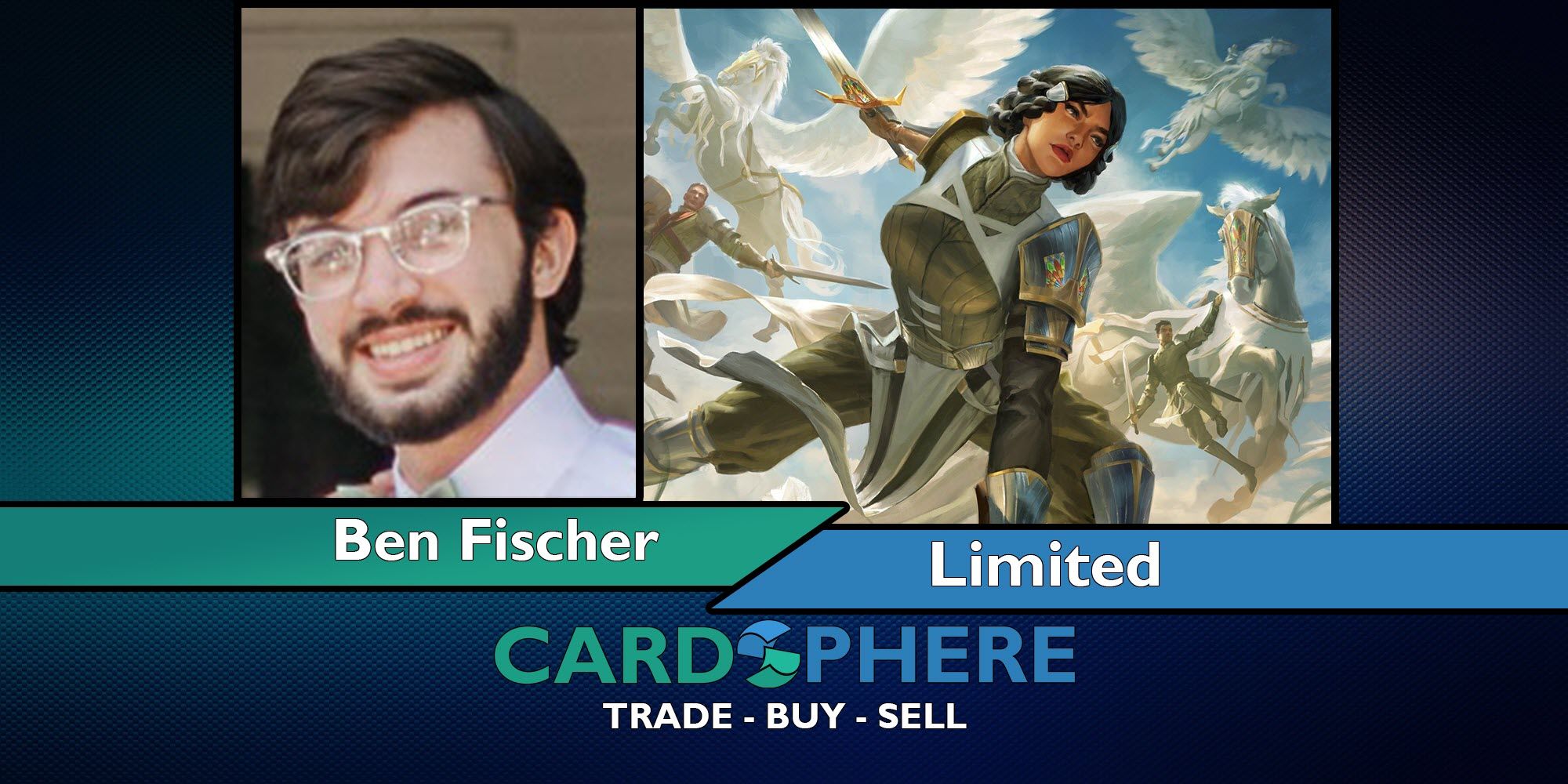Dominating Dominaria Vectors!

Everyone is loving Dominaria United! Vector Theory will help you make the most of your limited experience with this fresh and exciting set.
I called it in my last article- DMU is focused on the 5 colors, and each color has a card that tells you exactly what it wants to do. How wonderfully symmetric! The really fun part is finding where the best overlaps lie, as well as exploring some of the more complex deck options like Domain and Defenders. This makes it an ideal set for Vector Theory (check out this article for some background). If I say that I drafted a white-blue deck, it could be a go-wide deck, a spells deck, or a tempo deck- all very distinct, each with a different vector, all within the same color pair. Instead, I’ve found it very useful to think in terms of vectors while drafting and deckbuilding, as it becomes obvious what cards are suited for certain white-blue decks, and which ones are better in others. Today, I’m going to highlight a few of my favorite vectors to play in the set, and some cards that really make them tick.


A quick refresher on vectors: cards and decks have strength and direction, just like vectors in physics and math. The strength is generally indicated by the card quality, while the direction is generally indicated by what the card is “trying to do.” For example, Argivian Phalanx and Defiler of Faith point in the same direction, but have different vector strengths. Argivian Phalanx and Yavimaya Sojourner have different vector directions, but are about the same power level.

Vector #1: Go-Wide
Mostly a white vector, and one of my favorite things to do in the set, it matches up very well against low-power walls and decks like Domain that just play 1 creature per turn. This deck can easily go too wide for other decks to interact with profitably.
It really only takes a handful of cards that make multiple bodies to put you solidly in this vector. Argivian Cavalier and Captain’s Call get you started, while Argivian Phalanx and Destroy Evil help you close out the game. This is the core of the vector, and it can be slotted into a variety of different color pairs. White-blue lets you use Tolarian Geyser and Stall for Time to keep your attacks clear. Pairing with red gives you access to the all-star common Keldon Strike Team, a functional army in a can. Pairing with black or green tends to lead you towards a more midrange tokens strategy, with cards like Elas Il-Kor, Sadistic Pilgrim or Zar Ojanen, Scion of Efrava making great use of the tokens.

Vector #2: Spells
Primarily a blue vector, it makes great use of the plethora of cantrips, and has aggressive and reactive sub-vectors. The aggressive version wants to land some strong early creatures, then support and buff them with cantrips and tricks. Electrostatic Infantry, Ghitu Amplifier, Haunting Figment are all nice here. The reactive version prefers to control the board with efficient removal and permission spells like Runic Shot, Essence Scatter, and Fires of Victory, then drop some 2-mana Tolarian Terrors to finish the game. Some decks fall in between, and the way they play out varies by your draw. Both spells vectors play all the cantrips they can get, and are pretty happy with Terror.

Vector #3: Domain
The “green” vector tends to spread into all 5 colors! The design team nailed the Domain deck- it’s powerful, fun to play, but doesn’t dominate or have access to too many bombs thanks to intentionally difficult casting costs and limited applicability of cards like the Defiler cycle. This vector is heavily reliant on achieving domain, so lands become very high picks. Most domain decks are reactive, playing early removal in any colors it can get, then finishing with a selection of payoffs. Lightning Strike, Tribute to Urborg, Artillery Blast, and Flowstone Infusion all keep you alive until you can resolve game-enders like Tatyova, Steward of Tides, Meria’s Outriders, or Yavimaya Sojourner. Urborg Repossession is fantastic here and usually seals your win against assertive decks hoping that you run out of top-end cards. Some domain decks have a few Nishoba Brawlers and can end the game a bit faster- if so, I recommend Gaea’s Might as an extremely efficient pump spell that can kill your opponent out of nowhere.

Thinking about this set in terms of vectors can help you avoid simple deckbuilding errors. For example, a red-white deck might seem like a nice home for Molten Monstrosity. However, if your creatures are all small tokens, you’ll likely never cast it! Think very carefully about what vector direction your cards are collectively pointing in, and you’ll find that you make better choices in drafting, deckbuilding, and gameplay.
There are plenty of other interesting vectors to explore, from graveyard to pump spells to defenders. Enjoy Dominaria United! The upcoming Brothers’ War is looking like a blast from the past, but I’m perfectly happy enjoying the present while we have it. For more discussion of vector theory in Dominaria United, check out the most recent episode of Draft Chaff Podcast.
